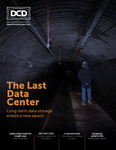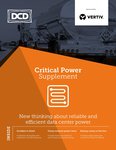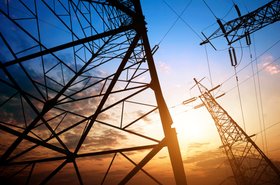Data centers are seeing a boom in power demand due to digital transformation of our global economy that will continue to grow in the next years. Current forecasts predict that data center energy demand could reach 13 percent of global electricity by 2030 (according to much disputed figures from Anders Andrae) At a European level, small markets are experiencing tremendous growth in electricity use. For example, Ireland’s data center electricity use has more than tripled since 2015, accounting for 14 percent of total electricity consumption in 2021. In Denmark, data center energy use is projected to triple by 2025 to account for around 7 percent of the country’s electricity use.
Meanwhile, the impact of data centers on the environment is also increasing, despite innovation in digital technologies. It is estimated that data centers are responsible for nearly 2.5 percent to 3.7 of GHG emissions, which surpasses emissions from commercial aviation (2.4 percent) or other activities (such as shipping or rice cultivation).
The current energy crisis is not helping to fulfill market demands. According to Reuters, the benchmark European gas price has jumped by at least 550 percent in the past year. The current spike in energy prices and disruptions to the energy supply in Europe is raising many concerns among businesses – especially within the data center market, which is simultaneously experiencing a dramatic increase in demand for data processing, traffic and storage since the pandemic.
However, in the short term, European data center operators should be preparing themselves for a winter full of uncertainty. While data center power demand is reaching record-high numbers, power availability is increasingly lacking. This is driving concerns around the reliability of the grid and especially around unpredictable power outages.
Power outages are an imminent threat for data centers
Energy supply challenges are feeding a growing unreliable and unpredictable electrical grid with both planned and unplanned outages. This power availability issue is being caused by a long list of factors: Increasing global warming effects (i.e. droughts in summer tapping reserves); rising electricity usage and costs; cybersecurity attacks on utilities; supply chain issues resulting in delayed wind and solar grid capacity coming online; plans to shutter fossil fuel plants; and geopolitical rationing of natural gas combined with bans on coal imports and under-investment in conventional energy sources, among others.
While demand and supply levels still need to be adjusted to achieve the goals specified in the The Green Deal –the plan of making Europe the first climate-neutral continent by 2050– this dramatic scenario is putting pressure on data center operators to reconsider both their primary and their back-up electricity strategies to mitigate risk in midst of coming blackouts during winter.
How to reach the ultimate grid resiliency
In order to be well-prepared to navigate the winter, data center operators will have to supplement their normal power systems with alternative methods based on intelligent software technologies and strategic power sourcing.
Microgrids are evolving as a key enabler of on-site generation and energy diversification. While many operators were considering investing in microgrids for sustainability reasons, they are now very interested on its availability for varying durations. A microgrid provides access to multiple energy sources – the utility grid, energy storage, generators, solar or wind energy, etc. – and allows data centers to operate independently of the grid during outages and times of crisis, as well as potentially reducing carbon emissions due to renewable integration.
For those who don’t want to invest in a microgrid yet, there are other ways of mitigating risk this winter. Power purchase agreements (PPAs), where users buy power directly from generators through contract negotiations, are another good example. This is another example of how joining energy sourcing programs that secure the lowest cost contracts with the right suppliers also facilitates supplementary power sources while maintaining sustainability commitments and cost efficiency.
The power of digital to control demand
However, matching 100 percent of annual demand with renewable energy purchases or certificates does not mean that data centers are actually powered exclusively by renewable sources. The demand of data centers may not fully adapt to the volatile wind or solar energies.
At this point is where optimization and reduction of power demand are key. The capacity of integrating new electricity sources and storage (EcoMode UPS systems, generators, etc.), as well as using the latest cooling systems and predictive analytics software to optimize water and power consumption, while maximizing efficiency and operational performance, are fundamental to mitigate risks during the energy crisis.
Data center operators need to consider – now more than ever – the integration of digital technologies, that offer detailed and predictive analytics on all assets, with hybrid electricity solutions. This will be key, not only to always have the most cost- and energy-effective option at any time, but also to maintain their sustainability strategy towards net-zero goals.
Reaching net-zero amid instability and uncertainty
Data center operators will have to supplement their normal utility power systems with alternative methods not only to assure power supply, but also to be more sustainable in the long run. Data centers should not forget that they are responsible for nearly 2.5 percent to 3.7 of GHG emissions, thus they need to keep sustainability as their main long-term strategic focus.
The truth is that this unsettling scenario, mainly caused by current geopolitical dynamics, planned maintenance of some energy generation capacity, a rebound from the economic slowdown created by Covid-19, and the long-term decision of many European countries to reduce their dependency on fossil fuels and slowly transitioning to renewable energy sources, is putting energy supply resilience in jeopardy.
With instability and uncertainty in utility power, data centers will need longer back up run times and must supplement their normal power systems with alternative methods – at least in the short term – to power themselves through this coming winter.






